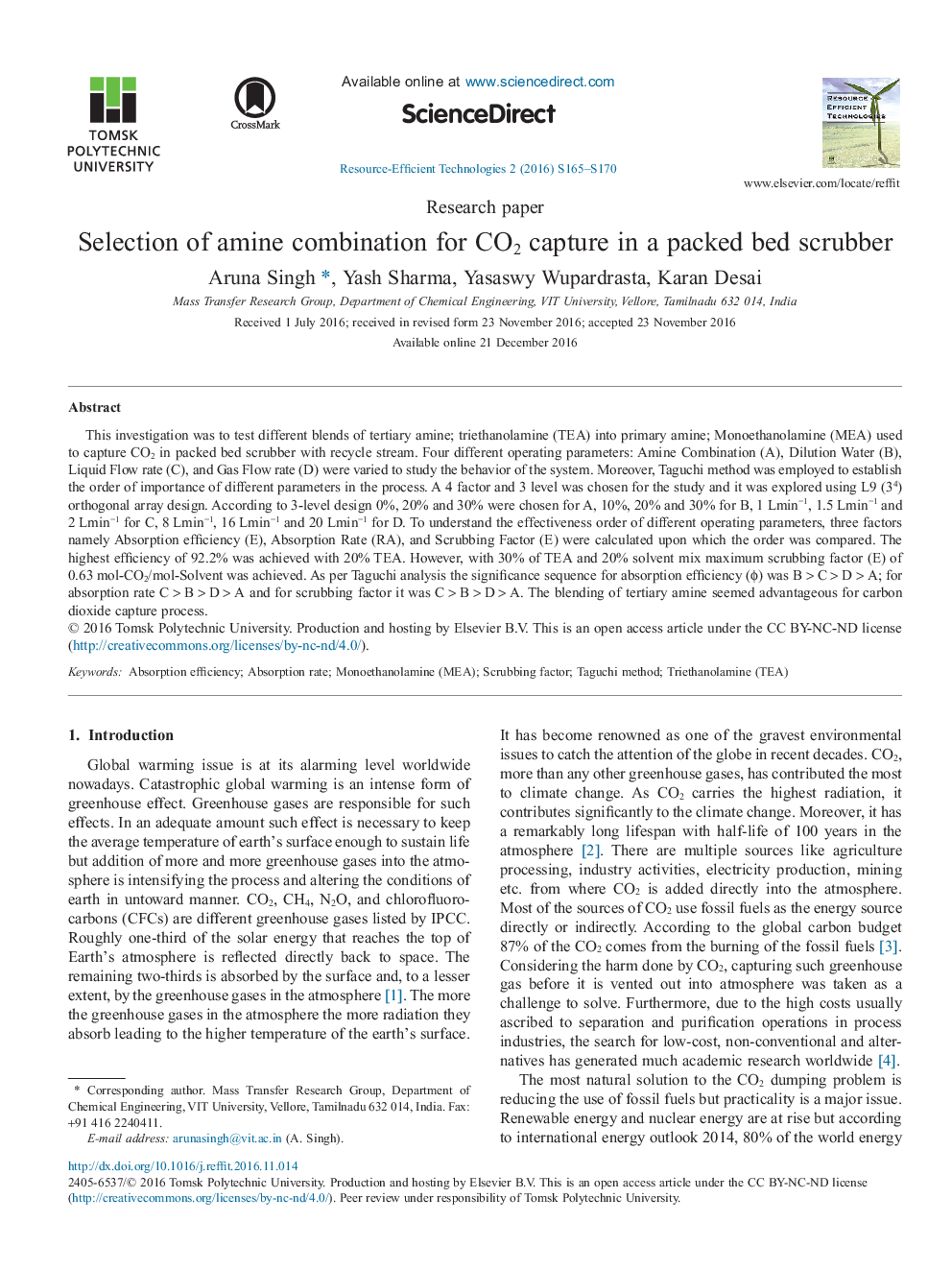| Article ID | Journal | Published Year | Pages | File Type |
|---|---|---|---|---|
| 5749696 | Resource-Efficient Technologies | 2016 | 6 Pages |
Abstract
This investigation was to test different blends of tertiary amine; triethanolamine (TEA) into primary amine; Monoethanolamine (MEA) used to capture CO2 in packed bed scrubber with recycle stream. Four different operating parameters: Amine Combination (A), Dilution Water (B), Liquid Flow rate (C), and Gas Flow rate (D) were varied to study the behavior of the system. Moreover, Taguchi method was employed to establish the order of importance of different parameters in the process. A 4 factor and 3 level was chosen for the study and it was explored using L9 (34) orthogonal array design. According to 3-level design 0%, 20% and 30% were chosen for A, 10%, 20% and 30% for B, 1âLminâ1, 1.5âLminâ1 and 2âLminâ1 for C, 8âLminâ1, 16âLminâ1 and 20âLminâ1 for D. To understand the effectiveness order of different operating parameters, three factors namely Absorption efficiency (E), Absorption Rate (RA), and Scrubbing Factor (E) were calculated upon which the order was compared. The highest efficiency of 92.2% was achieved with 20% TEA. However, with 30% of TEA and 20% solvent mix maximum scrubbing factor (E) of 0.63âmol-CO2/mol-Solvent was achieved. As per Taguchi analysis the significance sequence for absorption efficiency (Ï) was Bâ>âCâ>âDâ>âA; for absorption rate Câ>âBâ>âDâ>âA and for scrubbing factor it was Câ>âBâ>âDâ>âA. The blending of tertiary amine seemed advantageous for carbon dioxide capture process.
Keywords
Related Topics
Life Sciences
Environmental Science
Environmental Chemistry
Authors
Aruna Singh, Yash Sharma, Yasaswy Wupardrasta, Karan Desai,
